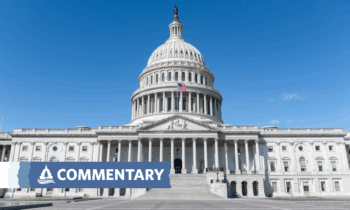 The clock is ticking for Congress to finalize Fiscal Year 2026 (FY26) appropriations before the continuing resolution funding the government expires on September 30, 2025. The House and Senate Appropriations Committees recently approved their own versions of Interior and Environment Appropriations bills. If these bills move to the floor, we can expect a showdown between “skinny budget” loyalists and other members of Congress, including Republicans, who are increasingly pushing back against the broad slashing of funds for various agencies and programs.
The clock is ticking for Congress to finalize Fiscal Year 2026 (FY26) appropriations before the continuing resolution funding the government expires on September 30, 2025. The House and Senate Appropriations Committees recently approved their own versions of Interior and Environment Appropriations bills. If these bills move to the floor, we can expect a showdown between “skinny budget” loyalists and other members of Congress, including Republicans, who are increasingly pushing back against the broad slashing of funds for various agencies and programs.
Here are a few examples of the competing budget proposals.
The White House
Trump has claimed that his administration will get toxins out of the environment and deliver the “cleanest air and water on the planet.” His budget request says otherwise.
The White House’s FY26 budget proposed significant cuts to agencies tasked with environmental protection and monitoring, including axing the Environmental Protection Agency’s (EPA) budget by more than half and reducing the National Park Service’s (NPS) funding by $1 billion.
Budget cuts of this magnitude, paired with the administration’s efforts to undermine environmental regulations and enforcement, set the stage for a country where pollution prevails at the expense of Americans’ health and safety.
The House of Representatives
Passed through the Appropriations Committee on a completely partisan vote, the House’s Interior and Environment bill scales down the funding cuts proposed by the administration but still delivers devasting blows to the environment and public health.
Their spending bill proposes a 23% reduction to EPA’s funding and a 6% reduction to NPS. The bill is also overflowing with policy riders that bolster the oil and gas industry and roll back protections on public lands. Of note are adverse riders that target specific issues PEER has been outspoken on including use of lead ammunition and tackle on public lands, access to grazing on public lands, and addressing PFAS in sewage sludge.
The Senate
The Senate’s bipartisan Interior and Environment bill, however, signals growing pushback to the dramatic cuts proposed by both Trump and the House. The bill has been applauded by many environmental groups for including mostly flat funding and text calling for the hiring of park staff, barring the transfer of national park units from NPS control, and even allowing spending on environmental justice.
Referred to as a “trust-building exercise” by Senator Lisa Murkowski (R-Alaska), the bill is a rare example, at least these days, of Democrats and Republicans working together and standing up to administration demands. For example, the bill report calls for increased accountability and transparency, particularly taking aim at EPA Administrator Lee Zeldin’s dismantling and reorganization of the agency.
What’s Next?
If Congress intends to avoid a shutdown, the spending bills must clear the floor and undergo significant reconciliation between versions, likely a Herculean task.
Nonetheless, the bills present an opportunity to capitalize on growing disapproval among members of Congress who are concerned about the administration’s gutting of critical agencies and attempts to take the power of the purse into its own hands.
As we head towards a potential vote on either bill, it is important to remind Congress that they should side with what an overwhelming majority of Americans support: keeping the agencies that protect our public lands and environment fully funded and running.
 Kaylee Rodriguez is PEER’s litigation assistant. Previously, she served as a legal assistant at the Department of Justice’s Environment and Natural Resources Division.
Kaylee Rodriguez is PEER’s litigation assistant. Previously, she served as a legal assistant at the Department of Justice’s Environment and Natural Resources Division.